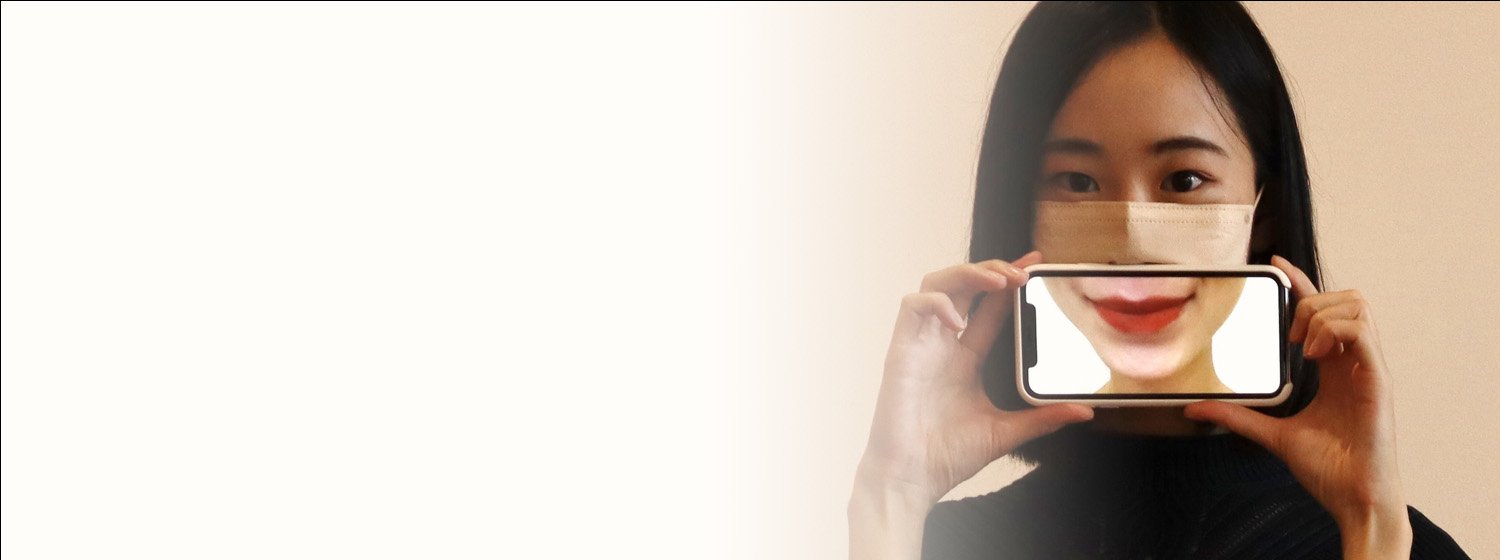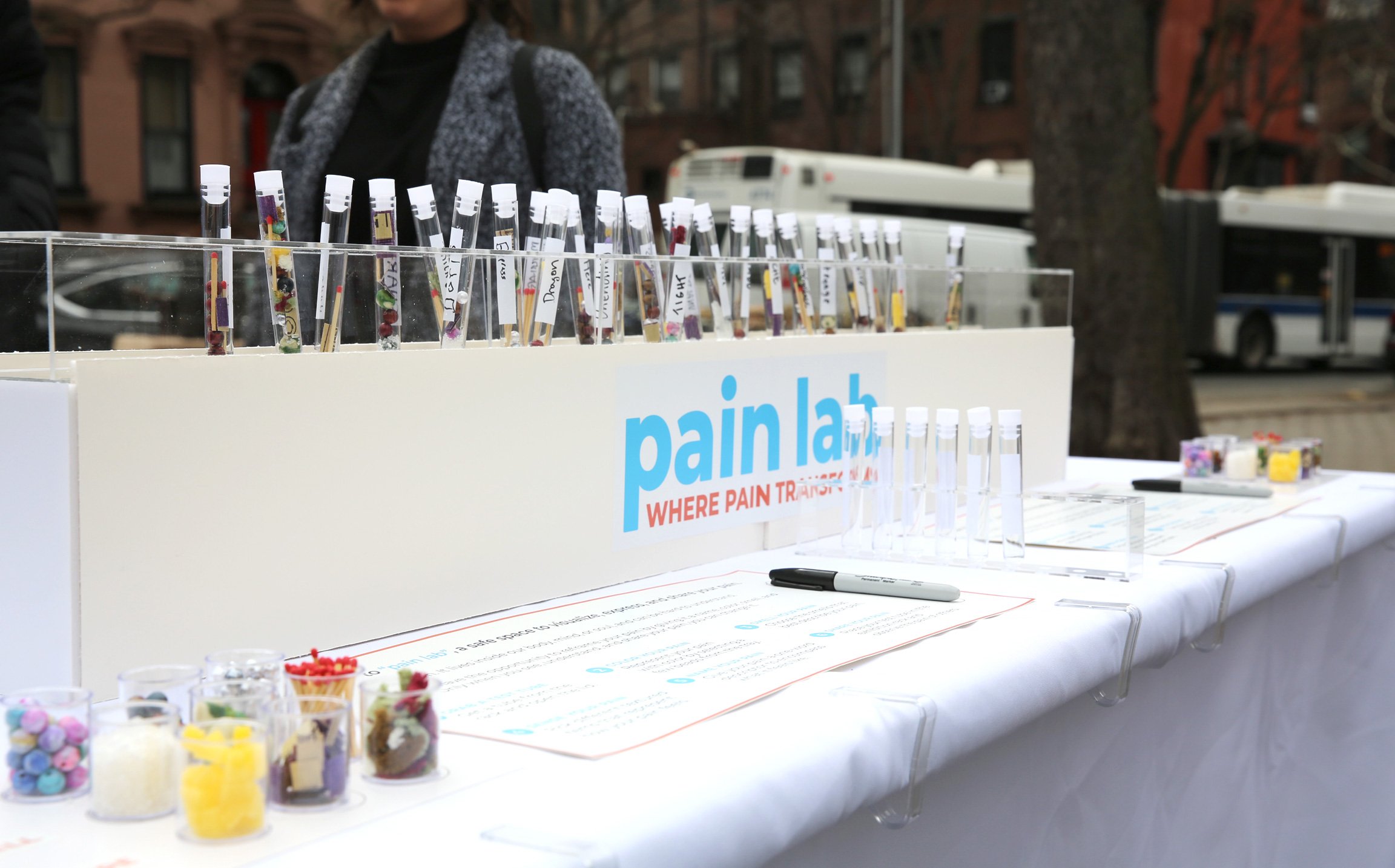
Student Projects
Products, Mobile Apps, Platforms, Thesis Work, and Design Thinking.
Applications are open! Deadline Jan. 15
〰️
Applications are open! Deadline Jan. 15 〰️
Featured Projects
Latest Projects
CHRONIC: How Understanding Your Pain Can Change Your Pain
Danna Krouham's thesis, Chronic: How Understanding Your Pain Can Change Your Pain, is an in-depth analysis of the complexity of the chronic pain system. While researching the intricacy of how chronic pain in the United States is addressed, Danna decided to zero in on uncovering the biopsychosocial model of pain. This body of thesis work proposes solutions to help patients understand their own experiences. "By better understanding their pain, they can actually change their pain. By designing a suite of tools and experiences with a unified biopsychosocial approach, Danna aims to help people understand their pain and reclaim control over their minds, bodies, and souls. This thesis is meant to serve as a learning experience by planting a seed in the reader's mind into unfolding the power the pained have over their pain.
Bridged Reality: Using Technology to Nurture Distant Relationships
Felix Ho's thesis, Bridged Reality: Using Technology to Nurture Distant Relationships, explores how technologies can break the barrier for those who are dear to us but living far away. When living at a great distance, friends, family, and couples sometimes become estranged. In order to create a new capacity for connection to break the distance barrier, Felix began his thesis exploration with a high-tech intervention that allows users from different locations to have a shared low-tech experience that makes the user feel connected asynchronously.
Weighted: Designing Towards Fat Liberation
Margarita Zulueta’s thesis, Weighted: Designing Towards Fat Liberation, investigates how anti-fat bias affects fat-identifying women through the lens of design. Anti-Fat bias is the discriminatory belief that the social stigma against fat people, in the tradition of fat activists reclaiming the term, is justified. Anti-Fat bias is normalized and affects the 1.9 billion adults who are considered to fall within this group. Having experienced the pain of anti-fat bias in her own life due to falling within the small-fat to mid-fat range, Margarita explores and creates products of design to create structures that move towards fat liberation.
Flex: Airplane Seating Addressing Anti-fat Discrimination
Margarita Zulueta's upcoming thesis, Accepting Fat, proposes fat acceptance through design offerings to combat anti-fat bias. Specifically, her project Flex—a speculative new fleet incorporated into Southwest Airlines—addresses discrimination in airplane systems through the lens of seating.
VODA: A Geo-Specific Personal Water Filtration System That Works With Any Pitcher
In an 11-week project, Margarita Zulueta, Zekun Yang, and Anne Keating set out to redesign in-home water filtration consumer products, of which Brita is the current market leader. Their solution? VODA—a reusable pitcher-agnostic system that pairs with a geo-specific custom water filtration mixture. VODA focuses on local, open-source accessibility to clean water, and aims to reduce plastic usage in our personal drinking water habits.
Water Surface: a DIY Arduino Lamp
Water Surface is a DIY atmosphere lamp that creates hypnotic ripples of light when touched. First-year designer, Qiting Fang, says the device is intended to “be placed on your table, shelf, or bedside to create a harmonious ambiance and absorbing experience.” Indeed, the lamp simulates the relaxing sensation of watching ripples appear on a placid lake.
SARAPOSO: Serving Up 'Home-Culture' Cuisine
SARAPOSO is a speculative company that increases access for international migrants to source, cook, and eat from their 'home' cultures while residing in a new locale. First-year student—and self-described urban international migrant—Margarita Zulueta was inspired to create SARAPOSO based on her own experiences.
NoPeeNow: Correcting Bad Kitty Behavior with Arduino
Imagine solving pet accidents at home by building your own DIY electronic device. First-year student Jingxuan "Susan" Zhang set out to do just that when she designed NoPeeNow to correct her cat's bad behavior. Using Arduino and ultrasonic sensors, the product detects where a cat is peeing and creates noise to frighten them away from that area, thereby changing the undesirable habit.
The Aquarius: A Seasoning Controller for Better Health
The Aquarius is a speculative seasoning controller designed to curb salt and oil overuse for better health. The precise bottle design allows the user to only pour out the recommended daily amount—not a drop more. First-year student Gaoming Lyu says her product design started with a traditional Chinese recipe, the tomato scrambled egg. "It's a favorite dish that my parents often cooked during my childhood," she explains. "I noticed that the flavor of this dish began gradually changing, becoming much saltier than before. I discovered that my father was adding more and more salt with each passing year." This experience in her family's kitchen attracted Gaoming's attention to how people's tastes become heavier as they age—a significant issue as salt intake in China is confirmed to be among the highest in the world.
Oasis Market: Finding a Solution to Food Deserts
Oasis Market is an online grocery service that delivers affordable, fresh food to residents living in food deserts. First-year student Stephen Joyce says his speculative company's solution to food apartheid involves combining empathy with economic relativization, investing directly into the communities they serve. "We seek to be an authentic and homegrown voice in our city, and we believe strongly that our primary duty is to our community, not our investors."
SafePub: The Best Way to Enjoy a Hassle-Free Night Out
First-year student Anne Keating created SafePub, a speculative project that commits to women and vulnerable minorities’ safety. Prioritizing the well being of women and LGBTQ+ individuals, the project envisions a network of allies in the form of pub owners, staff, taxi drivers, and local law enforcement.
Tea Waste Desiccant: A Sustainable Replacement
Have you ever wondered about those little “do not eat” packages of silica that accompany many shipped goods? That’s desiccant (from Latin, to “make thoroughly dry”)—widely used to absorb moisture from the air and reduce the humidity inside sealed containers. Desiccants are typically made from non-biodegradable materials like silica, but first-year student Qiting Fang reimagined a more sustainable solution. Tea Waste Desiccant is a speculative company aiming to transform tea leaf waste into natural desiccant and replace common non-biodegradable silica desiccant worldwide.
Living Pixels is a Smart Light Frame That Comes Alive in the Absence of Humans
First-year student Zekun Yang’s Living Pixels light frame was recently featured on the Arduino Blog. The article opens with, “As smart devices become more ingrained in our everyday lives, it’s perhaps only natural that we start to think of them as living things. What if such gadgets actually did have personalities and emotions that we as humans don’t ever see?” Zekun’s Living Pixels project illustrates this idea in luminescent style, as a picture frame that shows a static pattern of lights when anyone is nearby. When people aren’t present, and the device is left alone, it displays a range of emotions on its 16×16 LED matrix—from sleepy, relaxed, and even angry.
TRIGG≠R: Translating Contested American Terms to Reach a Shared Understanding
TRIGG≠R is a digital product suite that addresses language dissonance by translating American political terms in conversation. Created by first-year students Margarita Zulueta and Stephen Joyce, TRIGG≠R focuses on contested phrases to bridge the language divide through educational translation via an app and plugin.
The Solar Sleeve: Power on the Go
First year Katy Yuelapwan created the The Solar Sleeve featuring a top layer with solar cells embedded amongst the curvilinear surface, with a bottom layer with silicone straps, and a button that connects both layers. The button allows the product to conserve energy and for the two parts to nestle into each other when they are not in use. It allows the user to use stored up energy as they are walking through a desert wasteland in 2052. The challenges of this project were fitting functionality within the form that was distinguishable as an iteration. The successes of this project lied within utilizing Keyshot to implement Katy’s vision with materiality in mind.
Narrateam: Open-Sourcing Intersectional Feminist Resources
First-year, Margarita Zulueta created Narrateam, a platform that offers a centralized database for intersectional feminists to provide their own narratives and learn from the narratives of others, in order to gain a better understanding of the movement. Narrateam members can use the platform to share resources, events, and news items that are relevant to the movement and connect with like-minded individuals and organizations.
Steam Mouse Iron
For 3DPD1, first-year Qiting Fang created the Steam Mouse iron. She initially looked at the form of curvilinear and planar volumes before function was given to the product. Qiting worked through many iterations and landed on this wonderful redesign of a widely used home good.

























